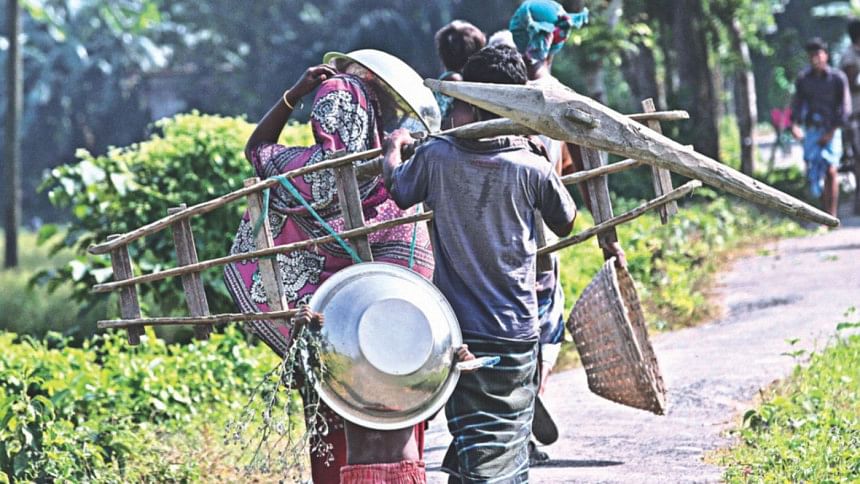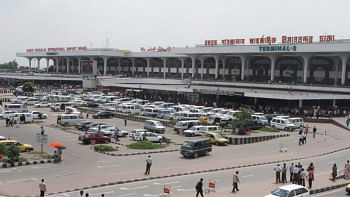Social safety net budget deserves higher share

The need for higher allocation for the social safety net programmes (SSNPs) has never been felt so badly than during the ongoing pandemic. Historically, given the resource constraint, Bangladesh could not manage to allocate the required amount of resources for SSNPs compared to other regions of the world. In South Asian countries, the average allocation for SSNPs is about 4 percent of their gross domestic product (GDP). The East Asian and Pacific countries spend about 8 percent of GDP on SSNPs while the European countries allocate about 20 percent of their GDP on social protection.
We are making slow progress in this case. The allocation in terms of amount has increased over time, so has the size of our economy. But the SSNP allocation as a percentage of the GDP has remained almost the same for a long time. For example, in FY2011, the share of SSNPs in our budget was 3 percent of GDP and in FY2021 also, the allocation for SSNPs is equivalent to only 3 percent of the GDP. In terms of total budget share, total allocation was 16 percent of the total budget in FY 2011, which increased marginally to 17 percent of the total budget in FY2021.
Of this allocation, a number of allocations under the SSNPs are not related to SSNPs directly. A disaggregated analysis would indicate that about 31.3 percent of the new safety net budget allocation in FY 2021 is kept for interest payment on national savings certificates. But this should not be part of the SSNP, since national savings certificates are financial products. Moreover, 23.6 percent of the SSNP budget will be used for interest subsidy for loans to cottage, micro, small and medium enterprises (CMSMEs) and interest subsidy to commercial banks together. Besides, refinance scheme for the low-income professionals, farmers, and marginalised businesses, and credit for self-employment ventures together account for another 23.6 percent of the safety net allocation in the FY2021 budget. Therefore, the net allocation for the poorest under the SSNPs is much lower than what is presented as the social safety net budget. These should be omitted from the SSNP budget in FY2022.
It is being discussed that the allocation for SSNPs in the upcoming budget for FY2022 will be higher in terms of the amount. However, in terms of GDP share, it will remain 3 percent as in FY2021. Needless to say, that is less than what is needed during the pandemic which has ravaged the economy in various ways and resulted in unemployment and higher poverty. All surveys by various think tanks, including the Centre for Policy Dialogue (CPD), indicate the difficulties of the poor and low-income groups and CMSMEs during the period of low economic activities due to disruptions. The stimulus packages announced so far are more for liquidity support in nature and less for fiscal support. About 80 percent of the stimulus packages are loan support from the commercial banks at subsidised rates and the rest is fiscal and food support. However, during an economic crises of this scale, the affected poor people should have more direct cash and food support rather than bank loans.
The pandemic also highlighted the need for a universal social protection programme, given the magnitude of the economic hardship of people. The government had prepared a National Social Security Strategy (NSSS) in FY2015-16, with the objective to tackle poverty and inequality. It aims to bring 3.57 crore of the poorest and most vulnerable people under a social safety net. However, the NSSS is yet to be rolled out. If this strategy had been implemented, the economic shocks faced by the poor during the pandemic could have been managed better. But the pandemic is not over, and it could still be an opportune moment to initiate the NSSS.
The other aspect of the SSNPs is the distribution and utilisation of resources. Access to the SSNPs by the poor has been difficult due to a number of problems, including mistargeting of beneficiaries and leakages. The list of beneficiaries is flawed. Several genuine beneficiaries are not on the list while many get onto the list through connections with the powerful, even though they do not qualify to be beneficiaries of the SSNPs. Therefore, the preparation of a database of the beneficiaries in a transparent manner is a precondition for a successful SSNPs. The selection processes of the beneficiaries may be improvedthrough a participatory process with the involvement of the local community in selecting poor participants in the SSNPs.
To bring transparency in the distribution process, the list of the beneficiaries should be made available to people by the local government offices. In case of the delivery of the safety net benefits, digital infrastructure should be in place for monitoring the distribution of aid. This will help strengthen the surveillance mechanism, improve efficiency in the delivery, and reduce leakages in the distribution process. The digital payment system can be strengthened following the good practices of other countries, such as the Adhar Card in India.
The efficiency of resources allocated for SSNPs could also be improved through harmonising various programmes. There is more than one programme in each category of SSNPs where similar projects, target areas, and groups are taken into consideration. Similar programmes should be consolidated and merged. This will help reduce administrative costs, leakages, and duplication of programmes.
Given that the pandemic has led to job losses and increased uncertainties of jobs in the near future, one important component of the SSNPs should be an employment generation programme for the poorest segment of the population. The Employment Generation Programme for the poorest that aims to enhance income of the poorest section through short-term employment generation during lean periods has been found to be useful. Similar employment generation programmes should be expanded through higher budgetary allocation to recover better from the Covid-19 pandemic. Such employment generation programmes should also have legal basis so that the government is bound to create employment for the poorest people. The National Rural Employment Guarantee Act (NREGA) of India is an example where the poorest have a guarantee for employment.
There are examples across the world on the success of the SSNPs during critical periods. The NREGA, which started in Maharashtra, India in 1970, was a successful initiative. Later, the Indian government took initiative in 2004 to expand this programme throughout the country. A number of special programmes taken during the past economic crises in various countries were also found to be useful. In the 1990s, during the East Asian economic crisis, Indonesia and South Korea undertook large economic programmes. Mexico during its crisis in 1995, Peru during the 1998-2001 recession, and Argentina during a serious economic crisis in 2002-03 conducted such large-scale programmes to tackle the crisis. Through social programmes such as conditional monetary support, Indonesia could reduce the number of school dropouts. The social sector programmes by the Argentinian government were able to reduce unemployment and extreme poverty.
Finally, our perspective towards the SSNPs should be changed, too. Social safety benefits are not relief from the government to the poor. Having access to the SSNPs is a right of the poor. It is the moral obligation of a democratic government to fulfil this right and distribute the benefits of development. As the government is going to place the budget for FY2022 on June 3, 2021, allocations and projects under the SSNPs should be guided by the broader objective of development—to have equitable access to opportunities. Direct support to the poor during this critical time of the pandemic and creation of employment opportunities for them are small steps towards that.
Dr Fahmida Khatun is the Executive Director at the Centre for Policy Dialogue. Views in this article are personal.

 For all latest news, follow The Daily Star's Google News channel.
For all latest news, follow The Daily Star's Google News channel. 



Comments